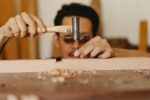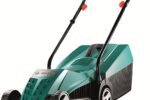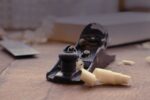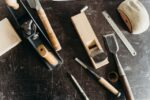How to check moisture content of wood without meter
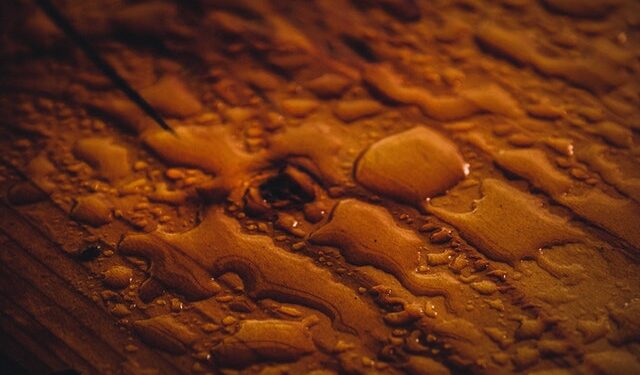
It is possible to measure the moisture content of wood without using a meter. There are several ways to do this, each with its own advantages and disadvantages. In this article, we will discuss three methods: the weight method, the screwdriver method, and the electrical resistance method.
The weight method is the most common and accurate way to measure moisture content. To do this, you will need to weigh the piece of wood before and after it has been drying in a kiln. The difference in weight will give you the moisture content.
The screwdriver method is less accurate but can be done without a kiln. To do this, simply insert a screwdriver into the wood. If it feels damp, then the moisture content is high. If it feels dry, then the moisture content is low.
The electrical resistance method is the least accurate but can be done without a kiln or a screwdriver. To do this, touch two wires to the piece of wood. If the electrical resistance is high, then the moisture content is high. If the electrical resistance is low, then the moisture content is low.
So, there are three ways to measure moisture content without using a meter. Each has its own advantages and disadvantages. Choose the method that best suits your needs.
What is moisture content and why is it important to measure it
Moisture content is the percentage of water in wood relative to the oven-dry weight of the wood. It is an important factor to consider when working with wood, as it affects the wood’s ability to absorb and release moisture, which can cause problems like warping, cupping, and twisting.
There are a few ways to measure moisture content: by weight, by volume, or by electrical conductivity. However, the most common way is by weight. This is because it is a direct measurement of how much water is in the wood.
To measure moisture content by weight, you will need to use a scale and an oven. First, weigh the wood that you want to test. Then, place the wood in an oven set to 220 degrees Fahrenheit for two hours. After two hours, remove the wood from the oven and weigh it again. The difference in weight is the water weight, and you can calculate the moisture content as a percentage of that water weight.
For example, if the piece of wood weighs 10 pounds before being placed in the oven, and 9 pounds after being in the oven for two hours, then the water weight would be 1 pound. The moisture content would be 10% ((1 pound/10 pounds)*100).
Why is it important to measure moisture content?
Moisture content is important to measure because it can affect the quality of the wood. If the moisture content is too high, the wood can warp, cup, or twist. If the moisture content is too low, the wood can crack or split.
Knowing the moisture content of wood can help you avoid these problems. It is especially important to know the moisture content of wood that will be used for floors, furniture, or other objects that need to be strong and durable.
There are a few different ways to measure moisture content in wood: by weight, by volume, or by electrical conductivity. The most common way is by weight, as it is a direct measurement of the amount of water in the wood.
It is important to measure moisture content because it can affect the quality of the wood. If the moisture content is too high, the wood can warp, cup, or twist. If the moisture content is too low, the wood can crack or split. Knowing the moisture content of wood can help you avoid these problems. It is especially important to know the moisture content of wood that will be used for floors, furniture, or other objects that need to be strong and durable.
Factors that affect the moisture content of wood
There are a few factors that will affect the moisture content of wood. Temperature and humidity are two of the most important, because they control how much water is in the air. When the temperature goes up, the water in the air evaporates more quickly, and vice versa. The higher the humidity, the less water will evaporate from the wood.
Other factors include the type of wood, how dense it is, and how much sap is in the wood. Sapwood generally has a higher moisture content than heartwood, because it’s closer to the tree’s living tissues. And denser woods will hold more moisture than lighter woods.
How to check the moisture content of wood
There are a few ways to check the moisture content of wood. The most common is with a moisture meter. These meters have two metal probes that you insert into the wood. The meter then gives you a reading of the moisture content.
Another way to check the moisture content is by using the oven-dry method. To do this, you’ll need to weigh your sample of wood, then put it in an oven at 212 degrees Fahrenheit for 24 hours. After that time, weigh the wood again. The difference in weight will tell you how much water has been lost.
You can also check the moisture content of wood by using the air-dry method. This is a slower process, but it’s more accurate than the oven-dry method. To air-dry your sample, place it in a well-ventilated area out of direct sunlight. Check the moisture content every few days until it’s stable.
Benefits of measuring the moisture content of wood
When it comes to woodworking, one of the most important things you need to know is the moisture content of the wood you’re using. This is because the moisture content can affect how well the wood will hold nails or screws, and also how stable the wood will be over time.
Luckily, there are a few ways to measure moisture content without having to purchase a special meter. In this blog post, we’ll discuss three different methods: using a ruler, using a screwdriver, and using your hands. We’ll also talk about some benefits of measuring moisture content, as well as some tips on how to get accurate readings.
Ruler Method:
To use a ruler to measure moisture content, start by finding a flat spot on the wood. Then, place the ruler on the wood and press down firmly. Next, slide the ruler across the surface of the wood until you reach the other side. Once you’ve done this, look at the number that is closest to where the ruler met the wood. This number will be your moisture reading.
Screwdriver Method:
To use a screwdriver to measure moisture content, start by finding a piece of wood that is at least six inches long. Then, insert the screwdriver into the wood until it is about halfway in. Next, twist the screwdriver back and forth a few times. After you’ve done this, remove the screwdriver and check the moisture reading on the end that was inserted into the wood.
Hand Method:
To use your hands to measure moisture content, start by cupping your hand around a small piece of wood. Then, squeeze the wood gently until it is damp. Next, touch the wood to your cheek or forehead. If the wood feels cool, then it has a low moisture content. If the wood feels warm, then it has a high moisture content.
Benefits of Measuring Moisture Content:
There are several benefits to measuring moisture content, including:
– Helps ensure that nails or screws will hold properly
– Helps prevent wood from warping or cracking
– Helps ensure that the wood will be stable over time
Tips for Getting Accurate Readings:
– Use the same method each time you measure moisture content to ensure accuracy.
– If using the hand method, make sure that your hands are clean and dry before testing the moisture content of the wood.
– If using the screwdriver method, insert the screwdriver into the wood at different depths to get a more accurate reading.
– Take multiple readings in different areas of the piece of wood to get an accurate moisture reading.
By following these tips, you can get accurate moisture readings without having to purchase a special meter. Measuring the moisture content of wood is an important step in ensuring that your projects will be successful.
Tips for maintaining the correct moisture content in your woodworking projects
Maintaining the correct moisture content in your woodworking projects is important to ensure that the finished product looks and performs as expected. Here are some tips for doing just that.
One way to check the moisture content of your wood is to use a moisture meter. These devices are relatively inexpensive and can be found at most hardware stores. Make sure to follow the manufacturer’s instructions for using the meter, as they can vary slightly.
Another way to check the moisture content of your wood is to simply observe it. If the wood looks dry and crumbly, it likely has a low moisture content. On the other hand, if the wood looks wet or spongy, it likely has a high moisture content.
Once you know the moisture content of your wood, you can take steps to adjust it if necessary. If the moisture content is too high, you can dry out the wood by placing it in a well-ventilated area or using a dehumidifier. If the moisture content is too low, you can raise it by misting the wood with water or placing it in a humid environment.
Monitoring the moisture content of your woodworking projects is an important part of the overall process. By taking the time to do so, you can ensure that your projects turn out looking and performing their best.
How to check moisture content of wood without meter
It is possible to measure the moisture content of wood without a meter by using some simple techniques. By checking for certain signs, you can get a general idea of how wet or dry the wood is and whether it needs further treatment. In this article, we have outlined three simple ways to check moisture content without any specialized equipment. Have you tried any of these methods? Let us know in the comments below!
1. The first method is to simply touch the wood. If it feels damp or wet, then it likely has a high moisture content. If the wood feels dry and brittle, then it likely has a low moisture content.
2. Another way to check moisture content is to look at the color of the wood. fresh-cut lumber will typically have a light colored sapwood, while older wood will often be darker in color. If the wood is dark and discolored, this could be an indication of high moisture content.
3. Finally, you can also try the sound test by tapping on the wood with your finger or a hard object. If the wood sounds hollow, then it likely has a high moisture content. If the wood sounds solid, then it likely has a low moisture content.
By using these simple techniques, you can get a general idea of the moisture content in your wood without having to purchase a specialized meter. Just remember that these are only approximate methods and that the only way to get an accurate reading is to use a moisture meter.
When checking the moisture content of wood, it is important to keep in mind that different types of wood have different ideal moisture levels. For example, hardwoods such as oak and maple should have a moisture content between 6-9%, while softwoods such as pine and fir should have a moisture content between 8-12%. You can find more information on the ideal moisture levels for different types of wood here.
No matter what type of wood you are working with, it is important to monitor the moisture content throughout the project. By doing so, you can avoid any potential problems down the road. Thanks for reading!
